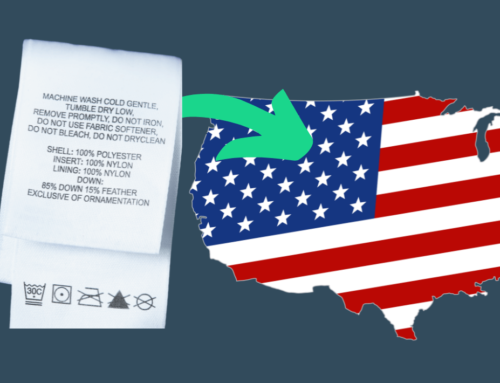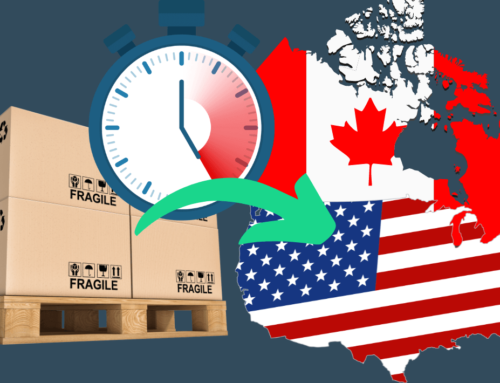Importing a Vehicle into the U.S. Temporarily

Breeze Customs Blog
Importing a vehicle into the United States doesn’t always have to be permanent. There are cases when you can import a vehicle or engine temporarily with an exemption from the United States Environmental Protection Agency (EPA).
There are five cases when you can import a vehicle temporarily by obtaining an EPA letter of exemption: for repair or alteration, for display, for testing, for diplomats, and for non-residents. But on what terms and conditions? Read on to learn about the 5 types of EPA vehicle exemptions, the restrictions that apply, and the requirements you must meet when applying to import a vehicle on a temporary basis.
1. Importing a vehicle for repair or alteration
You may import a vehicle or engine temporarily if the sole purpose of the import is for repair or alteration. The vehicle may not be driven on public roads or highways, cannot be sold or transferred, and must be exported after the repair or alteration or upon the expiry of the EPA exemption — whichever comes first.
The requirements for importing a vehicle for repair or alteration are:
- Filing, upon entry, an EPA Form 3520-1 declaring code “G” and attaching the EPA letter of exemption
- Posting a Customs Bond with U.S. Customs
2. Importing a vehicle for display
As determined by EPA, you may import a vehicle for a legitimate display purpose either for the general public’s interest (e.g., display in a public museum, display at a charity event) or a business (e.g., to test the market for a new product). However, a written EPA approval letter must be obtained before importation.
It is important to note that using this exemption for private purposes is not permitted, driving the vehicle on public roads and highways is not allowed, and offering a nonconforming vehicle for sale, as a gift, or as a prize in the U.S. violates the Clean Air Act. Moreover, the vehicle must be exported, destroyed, or brought into compliance through the services of an ICI at the end of the display purpose or expiration of the exemption — whichever occurs first.
The requirements for importing a vehicle for display are:
- Filing, upon entry, an EPA Form 3520-1 declaring code “K” and attaching the EPA letter of exemption
- Posting a Customs Bond with U.S. Customs
3. Importing a vehicle for testing
You may also import a vehicle or engine for testing purposes such as for research, investigations, studies, demonstrations, or training. The vehicle may be driven on public roads provided such operation is an integral part of the test program, but it cannot be sold or transferred to another party.
The importer carries the burden of proof that the proposed test program constitutes an appropriate basis for an exemption, and must satisfy all the requirements of 40 CFR 85.1705. The vehicle must be exported, destroyed, or brought into compliance through the services of an ICI at the end of the test purpose, or expiration of the exemption — whichever occurs first.
The requirements for importing a vehicle for testing are:
- Filing, upon entry, an EPA Form 3520-1 declaring code “I” and attaching the EPA letter of exemption
- Posting a Customs Bond with U.S. Customs
4. Importing a vehicle for diplomats
A vehicle may be imported temporarily by a member of the armed forces of a foreign country, or a representative of an international organization, or personnel of a foreign government on assignment in the U.S. who come within the class of persons for whom free entry has been authorized in writing by the U.S. Department of State. In this case, neither a Customs Bond nor an EPA approval is required.
The imported vehicle may not be sold or otherwise transferred to another party in the U.S. unless the new owner also has the required U.S. Department of State authorization, or orders for duty in the U.S. for members of the armed forces of foreign countries, and the new owner submits a new EPA Form 3520-1 to U.S. Customs. Otherwise, the vehicle must be exported at the end of the authorizing assignment, or U.S. Department of State authorization for free entry of vehicle, whichever comes first.
The requirements for importing a vehicle for diplomats are:
- Filing, upon entry, an EPA Form 3520-1 declaring code “N” and attaching the EPA letter of exemption
- A copy of the U.S. Department of State authorization, or orders for duty in the U.S. for members of the armed forces of foreign countries, must be attached to Form 3520-1.
5. Importing a vehicle for non-residents
Non-residents may import motor vehicles and motor vehicle equipment into the United States for personal use for up to one year. The vehicle must be imported in connection with your arrival, and it must be owned by you or on order before you depart from abroad. It cannot be sold or transferred to another party in the United States.
Only individual non-residents may import a vehicle through a non-resident exemption. It is prohibited to use this exemption primarily to conduct business, or for principle use by persons other than the importer (or spouse of the importer), the vehicle must be exported after one year, or upon the departure of the non-resident — whichever comes first.
Although written EPA approval must be obtained, a Customs Bond is not required in this case.
The requirement for importing a vehicle for non-residents is:
- Filing, upon entry, an EPA Form 3520-1 declaring code “O” and attaching the EPA letter of exemption
It is important to note that, for all exemption types, you must keep a copy of the EPA approval letter for future proof of EPA exclusion.
If you’re planning to import a vehicle temporarily into the U.S., speak to one of our Breeze Customs Concierges and book a meeting today! We’ll be happy to guide you and streamline your importation process.




